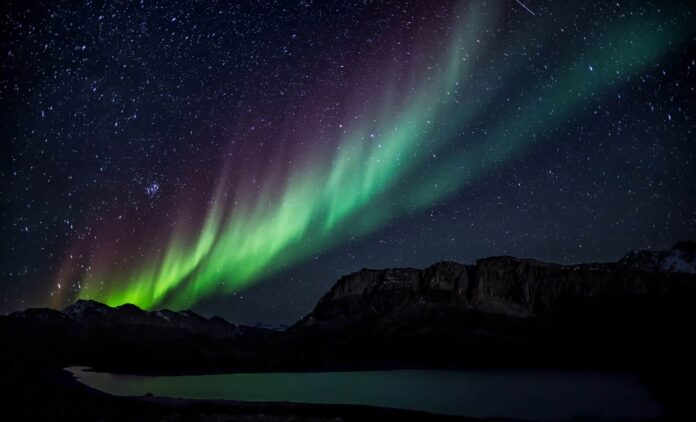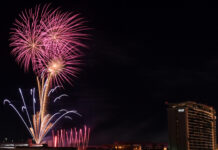The aurora borealis forecast northern lights of this week are shining bright throughout the United States with excitement. Based on an advisory from the National Oceanic and Atmospheric Administration (NOAA), the aurora borealis northern lights wonder show could make two consecutive appearance dates—April 15th Tuesday and April 16th Wednesday.
For photographers and skywatchers, this is a once-in-a-lifetime chance. Usually confined to near-polar regions, the aurora borealis might extend further south because of recent solar activity.
What Causes the Northern Lights?
The aurora borealis, or northern lights, is a breathtaking light display produced by nature. It’s produced when charged solar particles interact with gases in the Earth’s atmosphere. The particles follow the planet’s magnetic field, focusing on the North and South Poles. The outcome? Glowing waves of green, purple, pink, and red in the night sky.
When the sun emits a burst of energy—such as it did this weekend—it emits solar winds. Occasionally, these winds are strong enough to penetrate Earth’s magnetic shield. That’s when the magic occurs. The sky lights up with color as particles dance in Earth’s magnetosphere.
Where Can You See the Lights This Week?
This week’s northern lights aurora borealis forecast predicts the best views will be in Canada and Alaska. But several U.S. states will catch a glimpse, too. On the lucky list are:
- North Dakota
- Montana
- Minnesota
- Wisconsin
- Michigan
- Maine
- Washington
- Oregon
- Idaho
- Wyoming
- Iowa
- New York
- Vermont
- New Hampshire
- Pennsylvania
- Illinois
- Nebraska
If the geomagnetic storm gets stronger, more states might see the show. Even where the lights aren’t visible to the naked eye, long-exposure photographs may still be able to capture the beauty.
Also read: Sam’s Club Expansion Plans: 15 New Stores Annually
When to Watch the Northern Lights
Timing is everything. The optimum time to witness the aurora is late evening or early morning. Go out between 10 p.m. and 2 a.m. local time for the best view. Find a dark location free from city lights. Light pollution can quickly spoil the show.
For the latest best predictions, see NOAA’s 30-minute aurora borealis forecast. Satellite imagery is used to forecast solar winds’ direction and intensity, influencing visibility.
Weather Conditions Could Affect Viewing
Not everyone will enjoy a clear sky, sadly. There will be some areas that see cloudy, wintry conditions on Tuesday evening, reports AccuWeather. The Northeast and eastern Great Lakes may have rain, snow, and dense cloud cover. Skies could clear up by Wednesday evening, though.
More hopeful are the Midwest and northern Plains. Clear skies should prevail Tuesday night, although clouds might creep in by Wednesday. Cloudy Tuesday is forecast in the Pacific Northwest and Rocky Mountains, but both nights should be better.
Best Viewing Tips
- Head North – The further north you are, the greater your odds.
- Get Away from City Lights – Take a drive to a rural spot. Dark skies are a must.
- Check the Forecast – Utilize NOAA’s and AccuWeather’s live update tools.
- Bring a Camera – Employ long-exposure photography to photograph what your eyes may not capture.
- Stay Warm – It may be cold. Wear layers and have hot beverages.
Why It’s Worth Staying Up
The northern lights aurora borealis prediction doesn’t always guarantee visibility stateside, so when they do, it’s a big deal. Whether you are in North Dakota or New York, this might be your opportunity to see one of Earth’s most astounding natural spectacles.
Pick up your camera, get cozy, and keep your eyes on the horizon. The northern lights are calling.








